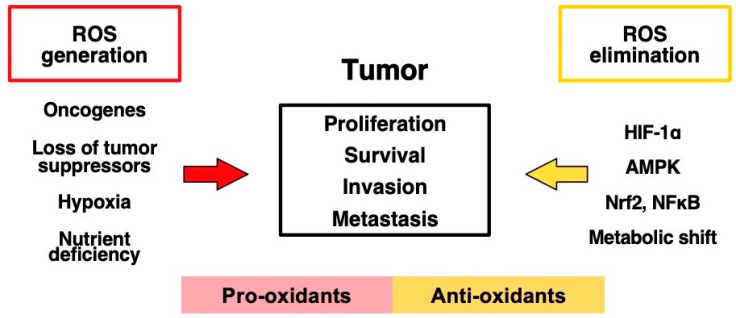Figure 1.
Cellular redox homeostasis in cancerous cells. Cancer cells display enhanced ROS production due to oncogene activation or loss of tumor suppressors and a relative oxygen and nutrient deficiency. To combat the onset of oxidative stress, cancer cells employ different defense mechanisms by activating transcription factors (HIF1α, Nrf2, NFκΒ) to enhance the transcription of pro-angiogenic and antioxidant genes. In addition, these factors also modulate metabolic gene expression to favor a metabolic shift to support the increased need for biomolecules and antioxidant molecules. AMPK is a sensor of nutrient status and can also support metabolic reorientation. Taken together, these pro- and antioxidant components promote tumor proliferation, survival, invasion, and metastasis [3]. ROS: reactive oxygen species; HIF1α: hypoxia inducible factor 1 alpha; AMPK: AMP-activated protein kinase; Nfr2: Kelch-like ECH-associated protein 1 (Keap1)-Nuclear factor erythroid 2-related factor 2; NFκΒ: nuclear factor kappa-light-chain-enhancer of activated B cells.

